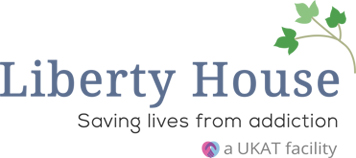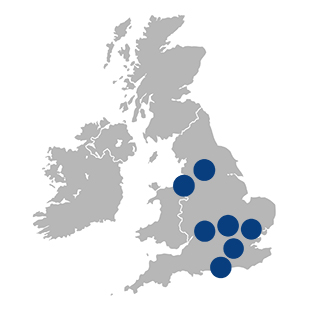Last Updated:
February 14th, 2025
Spice addiction
Spice is a relatively new drug that first emerged as a legal high before abuse quickly became rampant in the UK. In fact, the spice epidemic has been described as one of the most “severe public health issues the UK has faced in decades”, with police and crime commissioners urging for the drug to be reclassified as a Class A from its current Class B status.
Spice is a powerful psychoactive drug with a high potential for addiction. It is also incredibly unpredictable and dangerous so if you are struggling with spice addiction, getting the right help as soon as possible is vital.
What is spice?
Spice is a synthetic cannabinoid that was first designed to mimic the effects of cannabis, specifically the active component tetrahydrocannabinol (THC). Spice is produced in labs and sprayed onto plant matter so it can then be smoked. However, this production technique makes it impossible to know exactly how much spice you are taking, with batches of the drug fluctuating wildly in strength.
The effects of spice take hold immediately when smoked and the high can last anywhere from one to six hours depending on the chemicals used and the amounts taken. It is very easy to consume too much and this can lead to unpleasant side effects.
Spice has a number of different nicknames such as K2, Fake Weed, Black Mamba, Genie, Bliss, Bombay Blue and Zohai. It has also been referenced as the “Zombie Drug” in news outlets due to the slumped, zombie-like state it leaves its users in.
How does spice addiction develop?
Spice interacts with receptors in the brain in a similar way to THC but with a much greater effect. When synthetic cannabinoids bind to brain receptors, they impede the release of the neurotransmitters glutamate and GABA (gamma-aminobutyric acid) which in turn, causes the euphoric and relaxing high associated with spice.
With frequent spice abuse, your brain begins to readjust its natural production of neurotransmitters and becomes accustomed to the constant presence of spice. This means that if you try to quit, you will become a victim of intense withdrawal symptoms and need to take more and more of the drug just to get through the day. It is at this point that spice addiction begins to take over your life.
As with any drug addiction, spice addiction is a chronic condition that is defined by the uncontrollable need to take the drug despite being aware of its disastrous consequences. However, while it may seem like an impossible challenge, you can overcome spice addiction with the help of a rehab facility like Liberty House.
Who is at risk of developing spice addiction?
Truthfully, anyone can develop a spice addiction, no matter their age, gender or social class. There are, however, a few high-risk factors that make you more likely to develop an addiction to spice. These include:
- Trauma: those who have suffered a traumatic event or difficult life experiences may abuse spice as a way to escape reality.
- Mental health issues: people with mental health issues may attempt to self-medicate using spice or take it as a means to cope with negative emotions.
- Genetics: those with a genetic predisposition or a family history of drug abuse are more likely to develop spice addiction.
- Taking spice at a young age: if you begin abusing drugs at a young age, you are far more likely to develop an addiction as the developing brain is much more susceptible to the effects.
- Homelessness: spice knocks out its users and is popular in the homeless community for this reason – it allows you to pass out for a few hours and escape the cold or rain.
- Incarceration: spice is also commonly used in prisons because it can blur time, making years feel like months. This has earned it the title of “bird killer” in prisons, with ‘bird’ being a slang term for a prison sentence.
Spice is a cheap and readily available drug which makes it easy to procure. This means it is especially appealing to poor, vulnerable and marginalised people, putting them at a higher risk of developing spice addiction.
The dangers of spice
The unpredictable nature of spice coupled with wide variations in its production makes taking this drug very risky. Spice has the potential to cause extreme physical and emotional distress, as well as impact your relationships, finances and legal standing.
Some of the dangers of spice include:
- Acting aggressively or violently
- Confusion and delirium
- Anxiety, panic and paranoia
- Impaired coordination
- Vomiting and diarrhoea
- Inability to move
- Hallucinations and altered perceptions
- Seizures
- Breathing difficulties or respiratory failure
- Kidney failure
- Coma
There is simply no safe way to take synthetic cannabinoids like spice – doing so puts you at risk of harm, and could even prove fatal. Don’t wait until it is too late to get the help you need.
Spice detox and withdrawal
Spice detox is the first step in recovery from spice and refers to the initial stage of abstinence from the drug. It is here when your body will naturally begin to expel any harmful toxins that have built up as a result of your spice use. During spice detox, you may experience some uncomfortable withdrawal symptoms.
Spice withdrawal symptoms may include:
- Anxiety and depression
- Nausea and vomiting
- Restlessness
- Insomnia
- Vivid nightmares
- Headaches
- Agitation and mood swings
- Dysphoria
- Excessive sweating
- Inability to concentrate
- Impaired cognitive function
Due to the extensive variety of chemicals used in the production of spice, the duration of withdrawal differs from person to person. Some report suffering from spice withdrawal symptoms for around one week, and others significantly longer.
It is advised that spice detox takes place under the guidance of medical professionals who can not only keep you safe, but also ensure you remain comfortable and avoid relapse. It is all too common for individuals to turn back to spice when withdrawal symptoms become too difficult to handle, but this risk is eliminated when you undergo an assisted detox in a rehab facility.
Spice rehab
The short and long-term effects of spice addiction can be devastating – breaking free from this unhealthy cycle requires willpower and determination, as well as psychological healing. Spice rehab incorporates several effective therapies all with the common goal of helping you to achieve sobriety. Working with our qualified therapists, you will begin to understand why you turn to spice, identify your triggers and implement strategies to stay clean.
Liberty House offers the following addiction therapies to all of our clients:
- 12 step programme
- Dialectical behaviour therapy (DBT)
- Group therapy
- Family therapy
- Solutions-focused therapy
- Mindfulness-based therapy
- Art therapy
- Sound therapy
- Yoga and meditation
At Liberty House, you will be surrounded by a supportive network of like-minded individuals, as well as our expert team who all have first-hand experience in addiction and recovery. We are proud to offer a calm, serene space where you can relax, free from judgement, and fully focus on conquering your spice addiction.
A life without spice
When you’re suffering from spice addiction, it can feel like there’s no way out. You may have tried to quit multiple times, but have not yet been able to escape this powerful drug’s grasp. Although getting rehab treatment may seem like an insurmountable task, once you pick up the phone and reach out for help, we promise life will change for the better.
Not only will you start to look and feel healthier, but you will also be able to think more clearly. You will be able to rebuild relationships that have been lost as a result of your spice addiction, and you can start focusing on the things you enjoyed prior to your drug abuse.
If you are ready to turn your life around and get your life back on track, contact our admissions team today.








